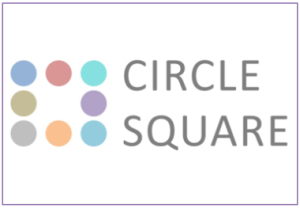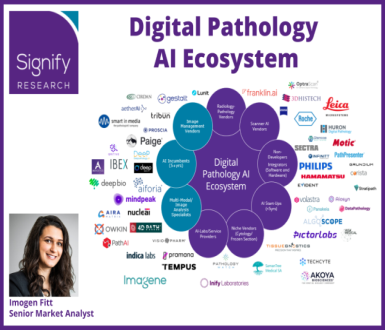Circle Square Digital Health Trends – September 2022


4th October 2022 – Contribution by Imogen Fitt – Featured in Circle Square Digital Health Highlights Newsletter.
The Ups and Downs of Digital Health

Healthcare analytics
Digital health analysts released helpful and insightful new models this month. These included Signify Research and market dynamics for digital pathology; Triple Tree for value-based oncology; Chilmark Research for AI and trust, and Summit Health for models of health systems innovation.
Contents

Healthcare Analytics
The evolution of value-based care in oncology includes a new CMS enhanced oncology model and support from investors Signify Research reports on drivers and barriers in adoption of platforms for digital pathology.
Pharma role in value-based care starts with value-based research Chilmark Research reports on AI and trust in healthcare Health tech developers must work with front-line clinicians when developing artificial intelligence tools AWS supports ten startups in its accelerator focused on health equity The FDA issued a guidance, Clinical Decision Support Software, to describe its approach to the technology Editorial cautions the FDA that AI clinical decision support (CDS) based on EHR data may present safety risks.
Signify Research reports on drivers and barriers in adoption of platforms for digital pathology

Drivers for digital pathology adoption
Efficiency gains: Digitized slides can significantly increase productivity of diagnostics reading
Collaboration and exchange: Between pathologists (remote, education, second opinion) or broader diagnostics (tumor board)
Improved diagnostic quality: More accurate measurements, error reduction, ROI finder, tumor grading Operational improvements: Pathologist productivity, resource balancing, telepathology, slide reading turnaround, physical slide archiving
Broader digitalization of healthcare: Pathology has been a laggard in enabling fully digital care
Support advanced research: Enables quicker analysis and larger datasets; focus is precision medicine
Declining pathologist availability: Minimize impact via remote reading and improved productivity
Barriers for digital pathology adoption
Technological: Image size, proprietary standards and network infrastructure required for scale
Cost: Upfront capital, investment in sufficient infrastructure to match current reading performance, limited ROI analysis, cost of archiving
Legislative and regulatory: Slow regulatory approval process for primary diagnostics; little industry consensus on technical standards
Physician education: Older physicians resistant to change and limited evidence of quality improvements going digital
Lack of established care models: Multidisciplinary care is relatively new with limited outcomes data
Fragmented digitalization: Clinical departments and labs digitized at different rates making pathology strategy more complicated
Limited availability of investment: Pathology budgets are small relative to other clinical imaging areas, e.g., radiology, cardiology, others
Editorial: Imogen Fitt, an analyst at UK digital health market research firm, Signify Research, sees change in the air. After many yea rs of lobbying, last month the College of American Pathologists (CAP) successfully petitioned the AMA to create 13 new codes. While there’s no compensation yet, the industry ca n begin to track the technologies. Notably, Deciphex (Dublin) launches a remote diagnostic service to help provide pathologist services in consultation.


